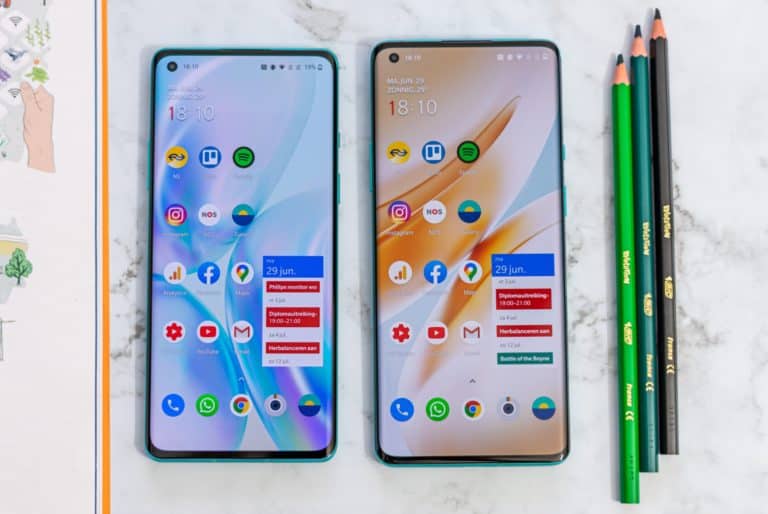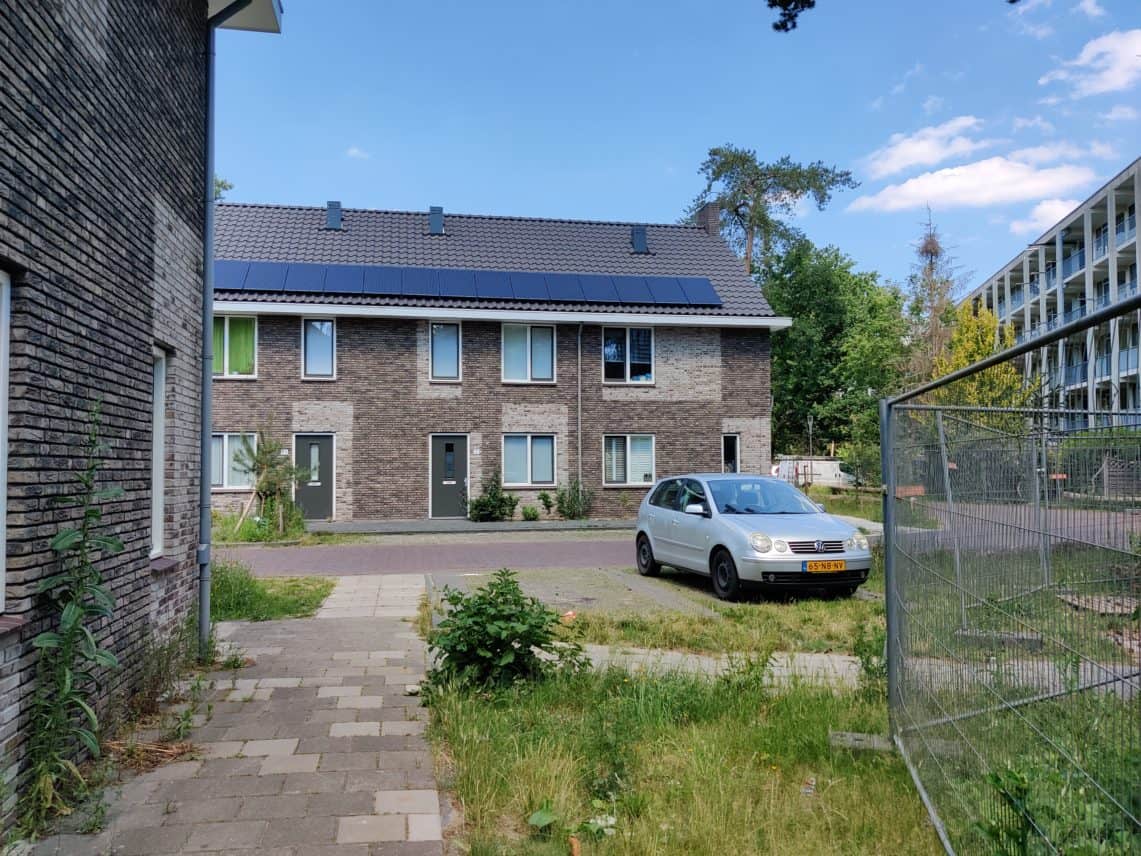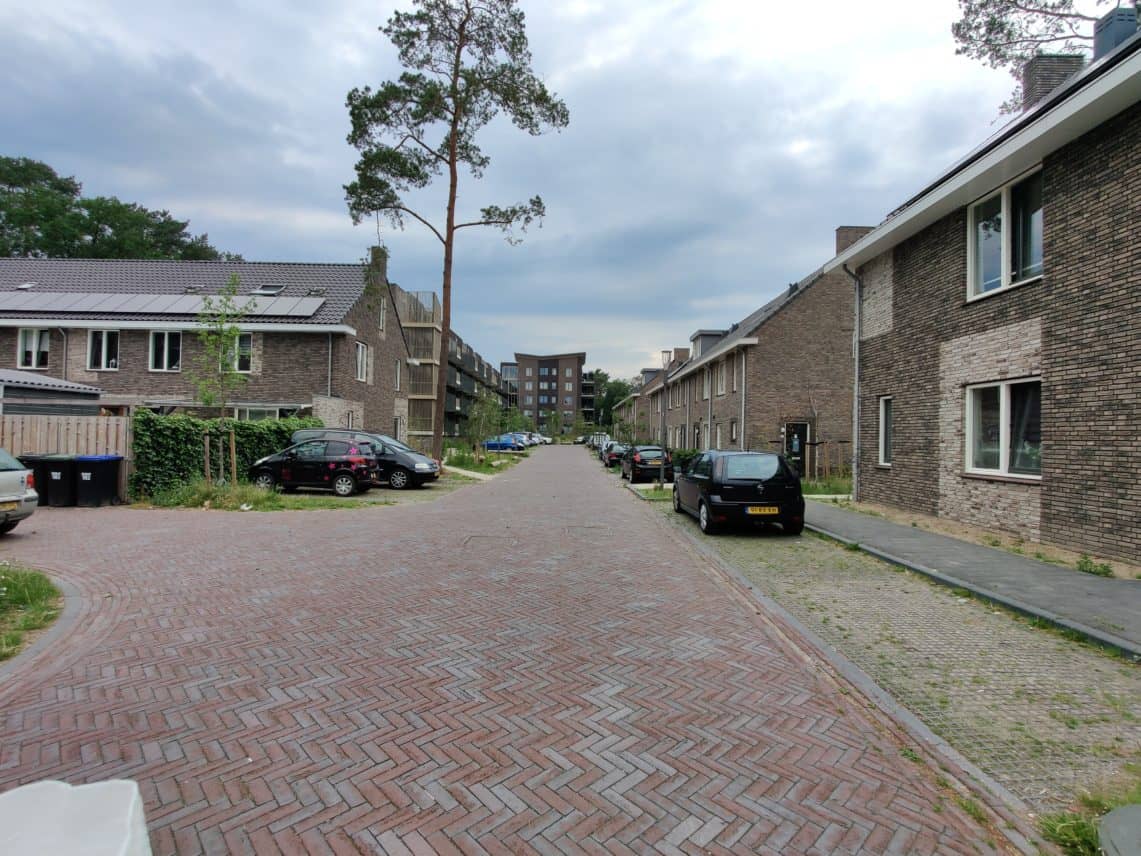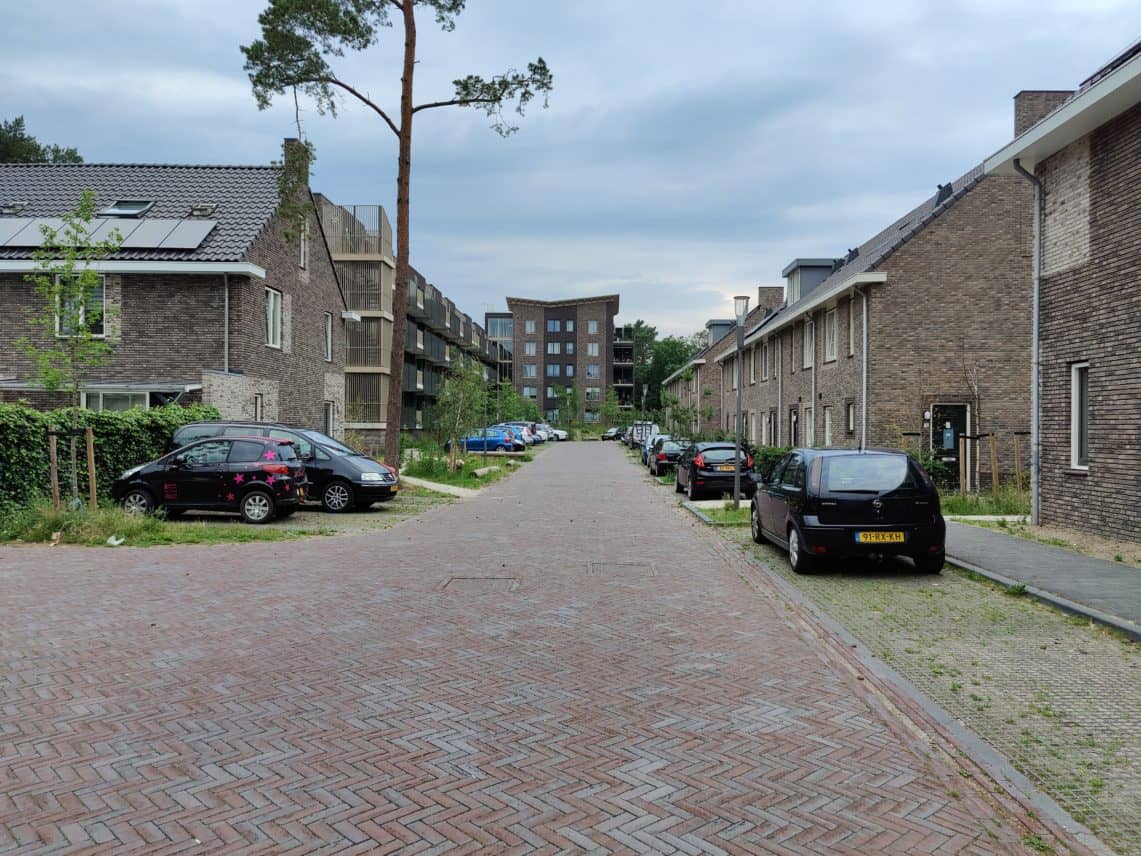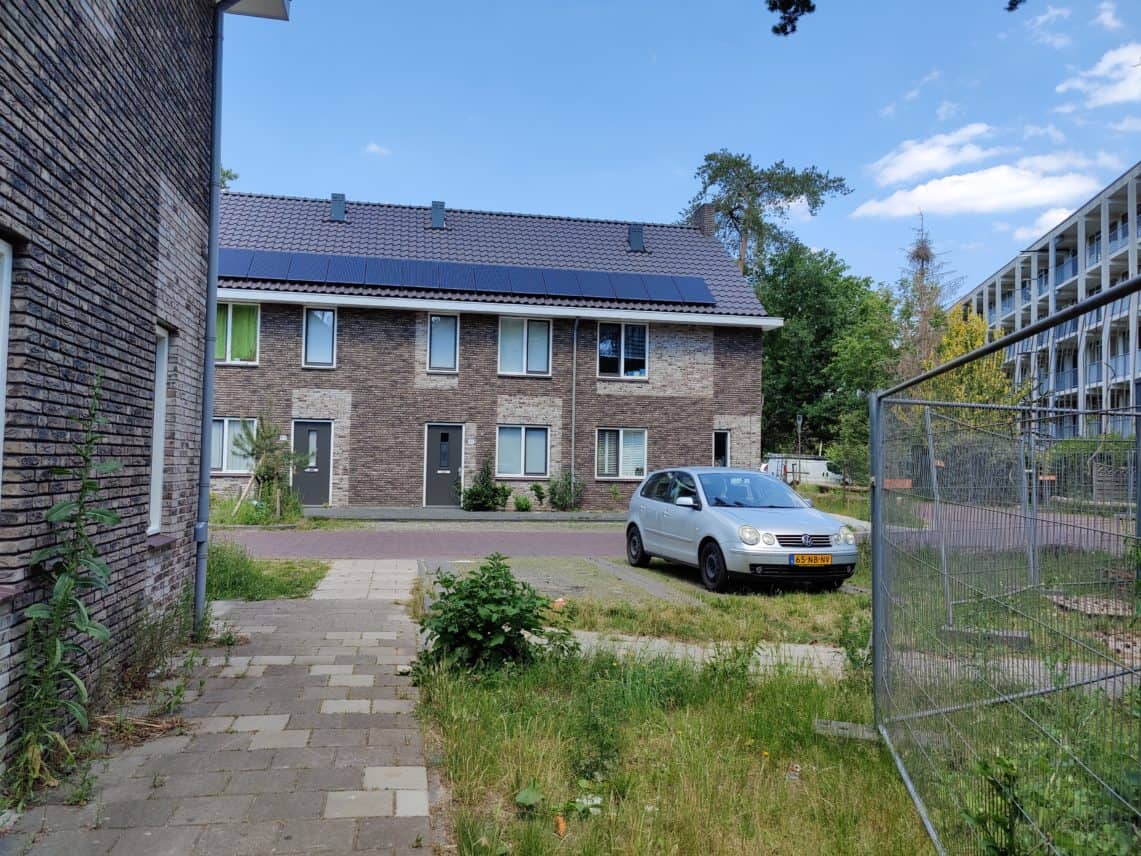Step by step, OnePlus crawled to the top of the market with its smartphones in recent years. In terms of price, but certainly also in terms of the quality of its smartphones. With the OnePlus 8 and OnePlus 8 Pro, the brand shows that it can now truly compete with the big boys and at the same time doesn’t forget the segment of flagship killers. In this review, Techzine takes a closer look at the two smartphones.
Important specs
| OnePlus 8 | OnePlus 8 Pro | |
| Screen | 6.55″ AMOLED, 1080×2400 pixels. 90Hz refresh rate | 6.78″ AMOLED, 1440×3168 pixels. 120Hz refresh rate |
| Network support | 5G | 5G |
| Processor | Qualcomm Snapdragon 865 (2,84GHz octacore) | Qualcomm Snapdragon 865 (2,84GHz octacore) |
| Memory | 8GB/12GB RAM, 128GB/256GB storage | 8GB/12GB RAM, 128GB/256GB storage |
| Battery | 4300mAh, 30W fast charging | 4510mAh, 30W fast charging, 30W wireless charging |
| Software | Android 10 with OxygenOS 10 | Android 10 with OxygenOS 10 |
| Camera | 48 megapixel main, 16 megapixel ultra-wide, 2 megapixel macro. 16 megapixel front camera | 48 megapixel main, 8 megapixel 3x zoom, 48 megapixel ultra-wide, 5 megapixel colour filter. 16 megapixel front camera |
Design is finally truly waterproof
Smartphones by OnePlus were always considered to be somewhat waterproof. The manufacturer insisted that the smartphones had increased protection against water and the devices withstood tests from various international media successfully. Officially, however, the company’s smartphones were never waterproof. The OnePlus 8 still has unofficial waterproof protection, but the OnePlus 8 Pro is now officially IP68 waterproof. This means that even when fully submerged, the phone should not encounter any problems. However, it is still not recommended to do this deliberately: electronics and water are a terrible combination, and after some wear and tear, a device may no longer be fully waterproof.
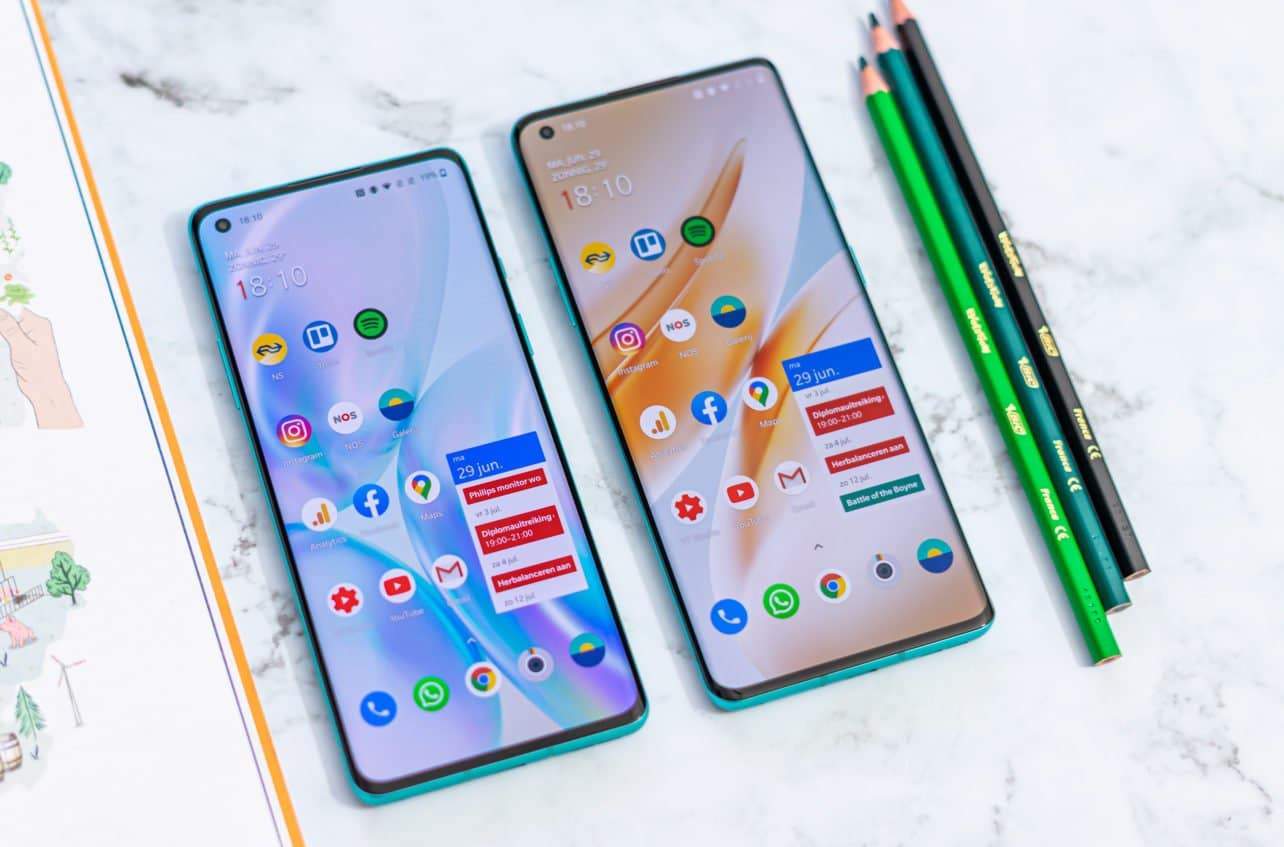
Apart from the phone being waterproof, the OnePlus 8 and OnePlus 8 Pro have beautiful designs. Both are made of a combination of glass and metal, have a curved screen and a small hole for the selfie camera in the upper left corner of the screen. The OnePlus 8 is the more elegant of the two: it is relatively light and feels pleasant to hold. The camera sticks out a bit, but it is not distracting. The OnePlus 8 Pro is clearly bigger and heavier and also has a camera that sticks out more. The latter is particularly annoying as it makes it difficult for the smartphone to lie flat on the table.
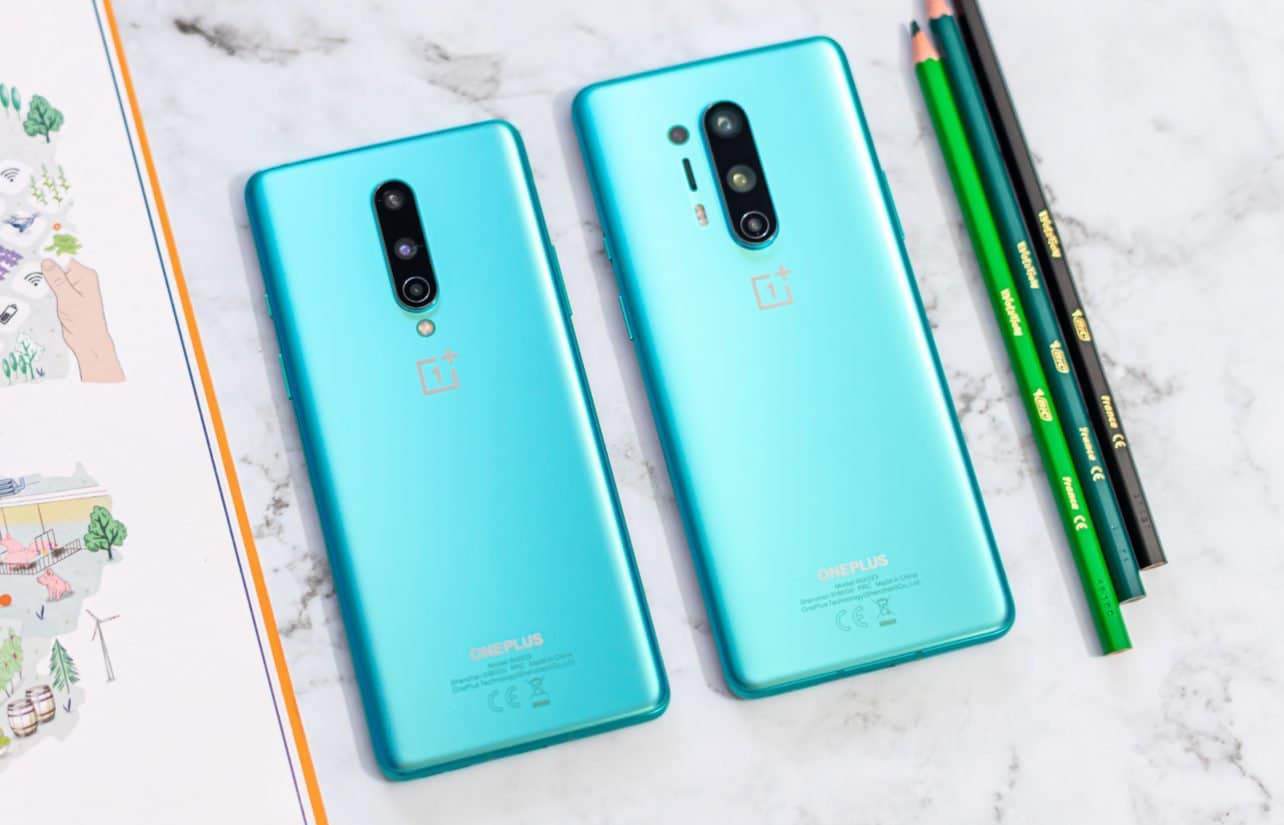
OnePlus definitely nailed the biometric security features of these smartphones. They have the option to provide additional security to certain things, like financial applications, with your fingerprint. The fingerprint scanner is located underneath the screen is fast and works well. Unlocking can be done with fingerprint or facial recognition which works excellent. The facial recognition uses the selfie camera and can be triggered if someone holds the phone in the direction of your face as well. Although it’s not the safest nor the most convenient when your phone has access to sensitive business data, it still works great, and we appreciate the fact that OnePlus provides the possibility.
Screens are both fast and beautiful
Both the OnePlus 8 and the OnePlus 8 Pro have a large AMOLED screen with a high refresh rate. Both screens look beautiful, but there are some slight differences.
The OnePlus 8 Pro has a 6.78-inch screen with a resolution of 1440×3168 pixels and a refresh rate of 120Hz. The device can easily handle the high resolution and high refresh rate, resulting in a screen that is technically one of the best on the market. In reality, this advantage is not that very noticeable: the difference between 90Hz and 120Hz is hardly visible and sharpness-wise it doesn’t really matter whether the image is rendered in FHD+ resolution or QHD+ resolution. The ”comfortable tone” setting, which adjusts the white balance to the surrounding ambient light, is very useful. This ensures that the white balance of the screen is always on the warm side, which makes the display very pleasant to look at.
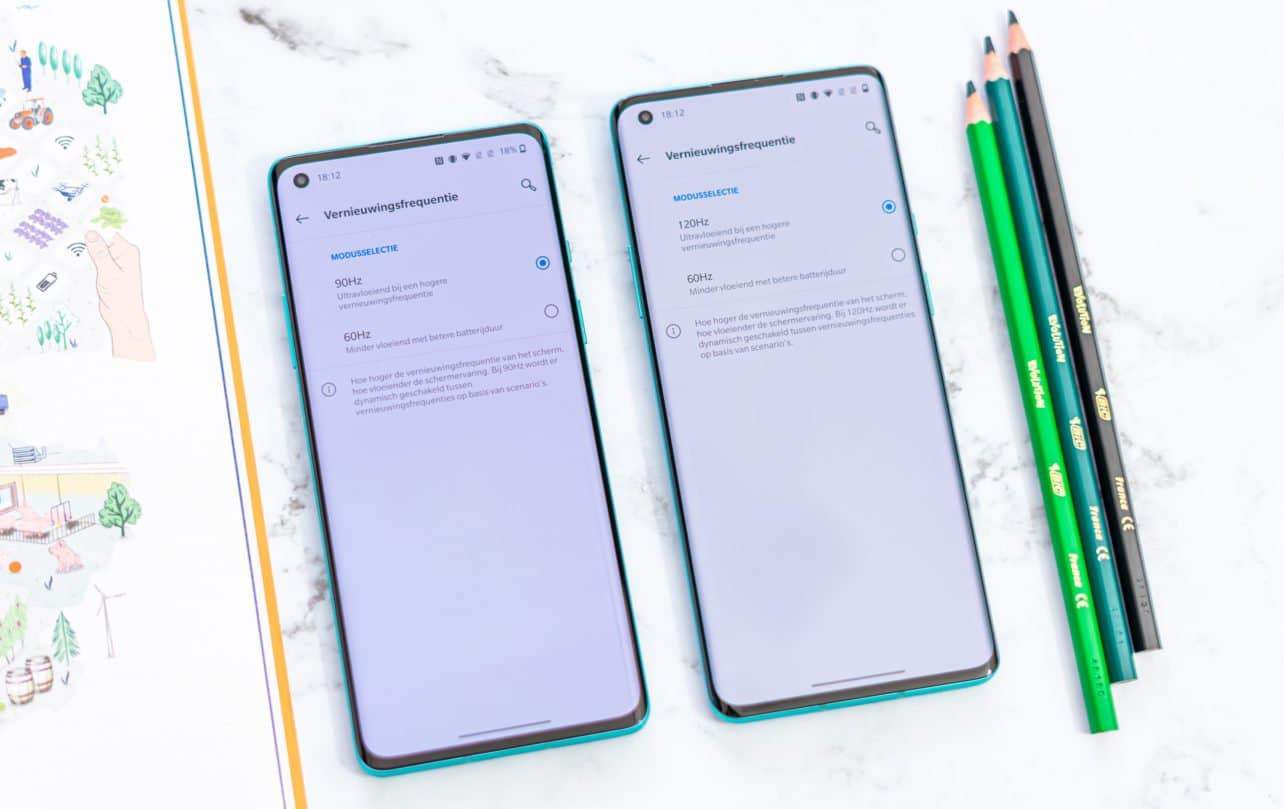
The OnePlus 8 does not have that option and uses a smaller 6.55″ screen with a resolution of 1080×2400 pixels and a refresh rate of 90Hz. The lower refresh rate doesn’t really matter, but the lower resolution does. Because the AMOLED panel has a PenTile pixel format, this resolution causes some colour shift on large contrast edges. On its own, it is not very distracting, but if you compare the OnePlus 8 to the OnePlus 8 Pro, the difference is clearly visible. Finally, we should mention that the screen of the OnePlus 8 has a slightly better viewing angle, but the OnePlus 8 Pro has a slightly better white balance.
Amazing performance
The performances of the OnePlus 8 and 8 Pro are pretty much the same, which means they’re both incredible. The smartphones are equipped with a Qualcomm Snapdragon 865 chipset: the best SoC currently available on the smartphone market. Both smartphones come in two versions: a basic version with 8GB RAM and 128GB of storage space and a premium version with 12GB RAM and 256GB of storage space. Both smartphones also perform magnificently in real-life. The fast hardware is combined with well-optimized software, and the devices are quite fast.
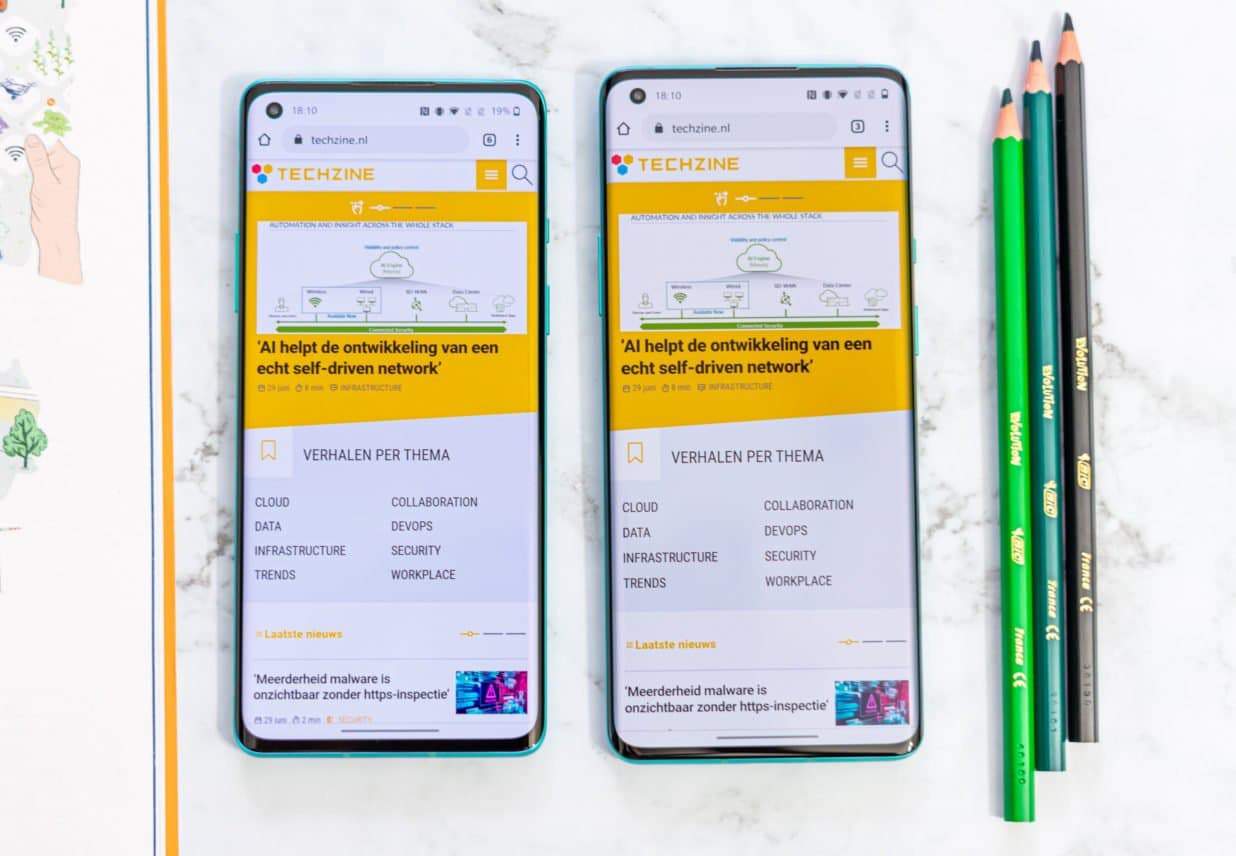
Qualcomm forces smartphone manufacturers to connect the Snapdragon 865 with a 5G modem and OnePlus did just that in both devices. This means users are ready to use 5G when it is supported in the coming years.
In terms of battery capacity, both smartphones don’t score particularly well, but they still last long enough in real-time. The OnePlus 8 has a 4300mAh battery, and the OnePlus 8 Pro has a 4510mAh battery. They score comparable, and both will make it through the day with ease, even with intensive use. Both smartphones support Warp Charge with a charge capacity of 30W, meaning they will be fully charged in less than an hour. Nevertheless, the OnePlus 8 Pro has an advantage over the standard OnePlus 8: it can also be charged wirelessly. With the optional OnePlus Wireless Charger this can also be done with a charging capacity of 30W, other wireless chargers work significantly slower with the device.
Software is great as usual
OnePlus is known for its incredible software and as always never disappoints. The OnePlus 8 series runs on Oxygen OS 10 on top of Android 10. The software of OnePlus has some extra management capabilities and several smart features but remains somewhat similar to the standard Android interface. The software looks sleek and runs well.
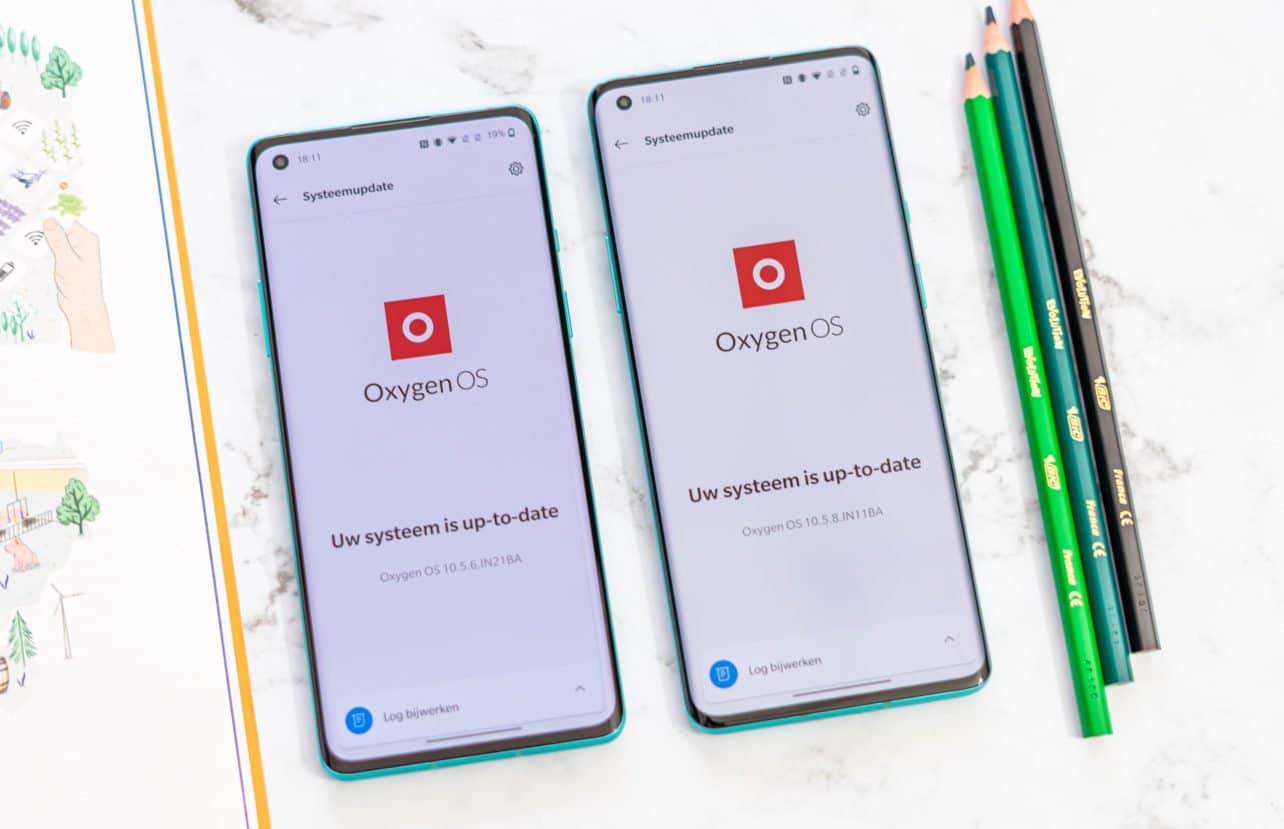
Unfortunately, OnePlus is lacking in terms of business features. The OnePlus 8 series is not part of the Android Enterprise Recommended program and OnePlus does not have its own business solution. On the other hand, the support of OnePlus smartphones is outstanding. Devices are often supported with Android upgrades for up to three years, and many other Android manufacturers don’t support their phones for this long. The OnePlus 8 and OnePlus 8 Pro are therefore kept secure and up-to-date, which is excellent for anyone who does not require an Enterprise Recommended device.
Camera: Pro proves its value
The cameras have not traditionally been the strongest part of OnePlus. Finally, things have changed with the OnePlus 8 series, but you have to pay extra for the OnePlus 8 Pro in order to get a really great camera. The camera of the OnePlus 8 Pro is qualitatively miles ahead of the OnePlus 8, and that is where the Pro proves its value.
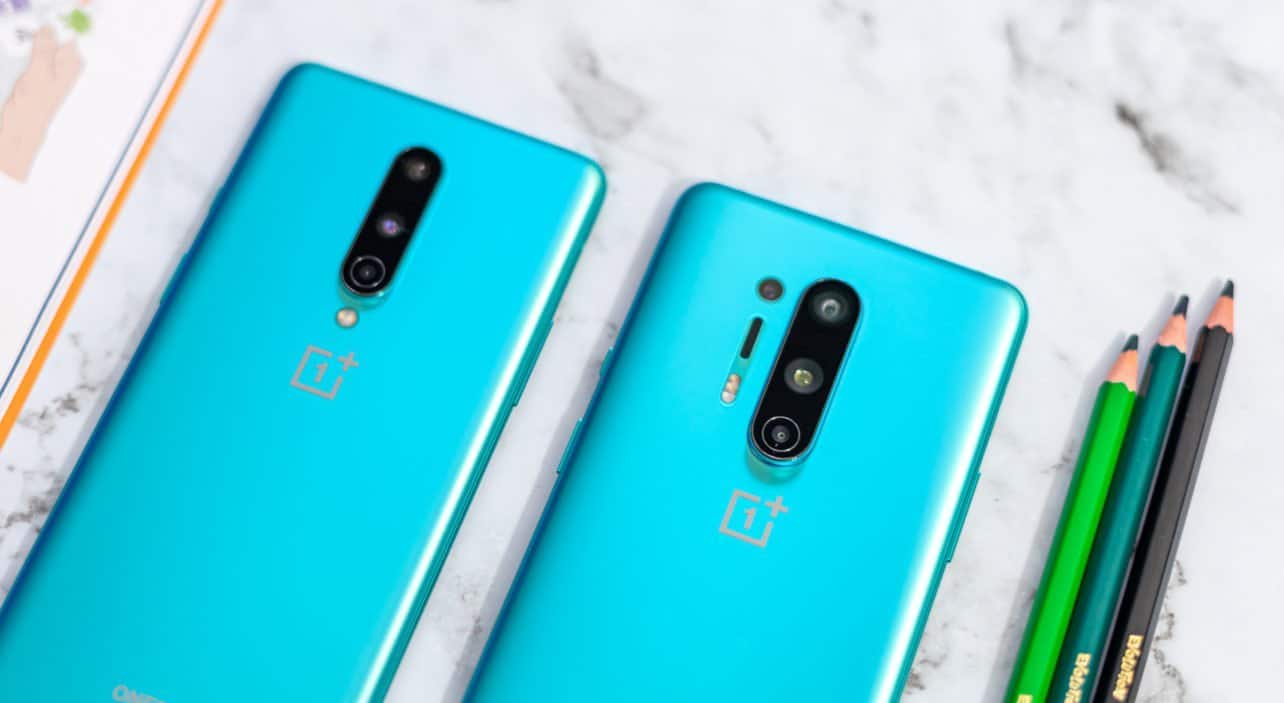
The OnePlus 8 has a 48-megapixel main camera, a 16-megapixel wide-angle camera and a 2-megapixel macro camera. Although the latter is a nice idea, the quality of these photographs are so poor, the addition of this camera doesn’t make a lot of sense. The wide-angle camera is a fun addition, and it takes decent pictures. The main camera of the OnePlus 8 is sufficient, but lacks some details in its photos and tends to make the colours greenish. The smartphone has a night mode, and although it performs alright, it doesn’t rank among the top of the market either.
The OnePlus 8 Pro also has a 48-megapixel main camera but with a larger and improved sensor. The 48-megapixel sensor that is positioned behind the regular lens in the OnePlus 8 has shifted to the wide-angle lens in the Pro. Additionally, the OnePlus 8 Pro has an 8-megapixel camera with 3x zoom and a 5-megapixel ‘ colour filter’ camera. The latter is pretty useless and is hidden deep within the settings. The wide-angle camera and the zoom camera both perform worse than the main camera, but they still take great photos that are quite consistent with the main camera in terms of colours.
The main camera of the OnePlus 8 Pro scores incredibly well. It takes detailed photos with beautiful colours that are actually amazing in all conditions. The image processing algorithms of the camera find a delicate balance between sufficient sharpness and a natural look. Even in the dark, night mode ensures detailed photos are usually spot-on in terms of white balance. This is definitely not a given for most high-end smartphones and OnePlus did a really stellar job. In short, the OnePlus 8 Pro has one of the best cameras in a smartphone at the moment, and that is a big step forward for OnePlus.
Conclusion
With the 8-series, OnePlus creates a beautiful duo of high-end smartphones. The Enterprise Recommended label from Google is missing for the business market, but when this doesn’t pose a direct problem, both smartphones are very worthwhile.
The traditional strengths of OnePlus have been perpetuated in this duo. They’re fast, have great software, are complete and for what they offer relatively affordable. With its price of 649 euros, the OnePlus 8 is one of the cheapest smartphones with 5G support, a Snapdragon 865 chipset and a large and smooth AMOLED display. It’s a good budget option for the traditional OnePlus fan, who doesn’t value extras like wireless charging and an excellent camera.
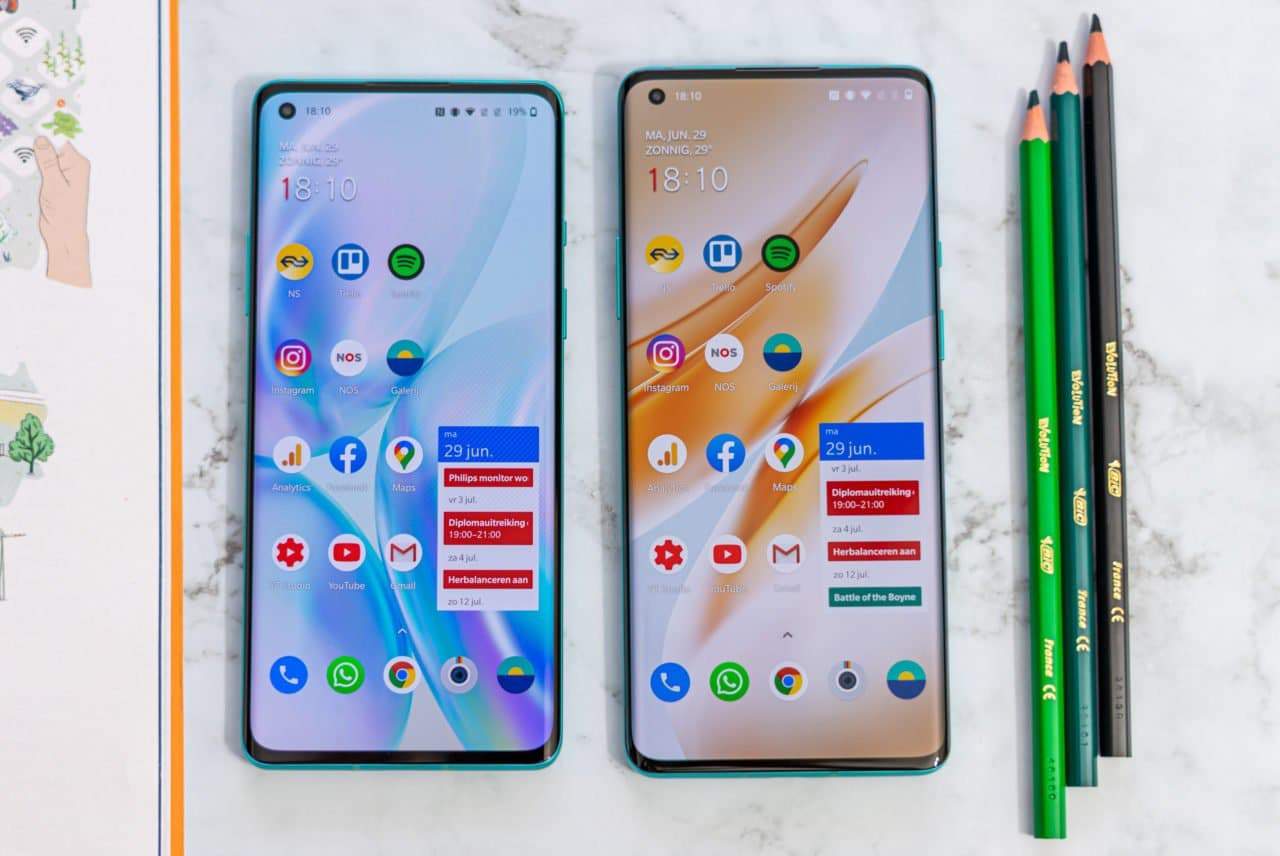
With the OnePlus 8 Pro, OnePlus clearly reached a new height and delivers one of the best smartphones on the market today. With its 899 euros, the smartphone is not cheap, but still significantly cheaper than its competitors. It combines the aforementioned high performance and great software with one of the best smartphone cameras, a waterproof design and incredibly fast wireless charging. The OnePlus 8 Pro doesn’t have any real disadvantages as long as the Android Enterprise Recommended program is not a necessity.
Score OnePlus 8
- Beautiful screen
- Amazing performance
- Great software with additional support
- Not Android Enterprise Recommended
- Camera is subpar
- Not waterproof and no wireless charging
Score OnePlus 8 Pro
- Incredibly versatile
- Amazing performance
- Great software with additional support
- Excellent camera
- Not Android Enterprise Recommended
- Camera sticks out too much
